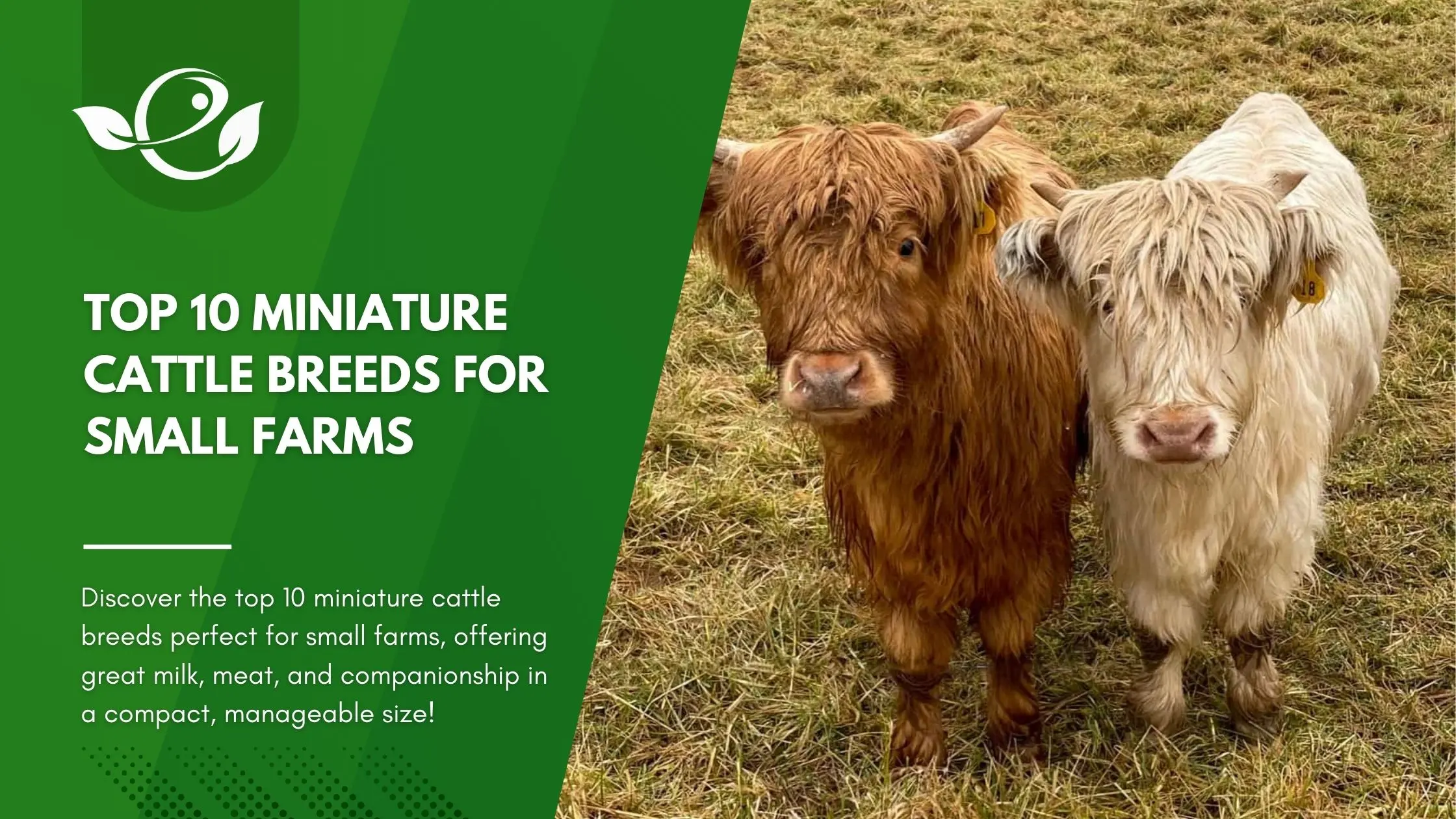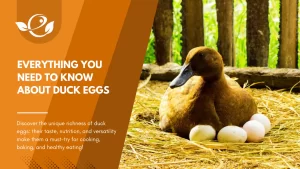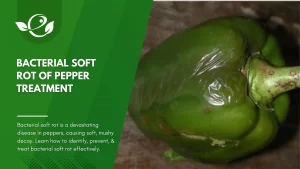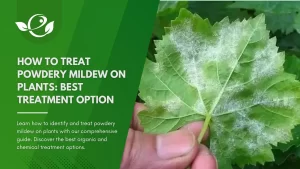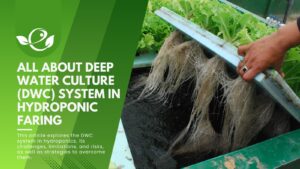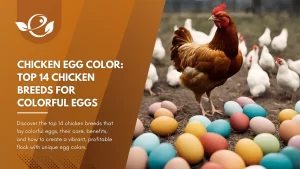Table of Contents
Are you dreaming of raising cattle but worried that your small farm doesn’t have enough space? Miniature cattle breeds offer a perfect solution for farmers with limited acreage. These compact, friendly, and versatile animals can provide high-quality milk, tender beef, or simply serve as a charming addition to your farm.
In the United States, where small and hobby farms are on the rise, miniature cattle are quickly becoming a favorite choice for farmers looking to maximize their resources. Not only do these breeds require less land and feed, but their manageable size and gentle nature make them perfect for farmers who are just starting out or those looking to expand their operations in a sustainable way.
In this guide, we’ll explore the Top 10 Miniature Cattle Breeds for Small Farms, helping you make an informed choice about which breed is best suited for your farm’s needs. Whether you’re interested in producing milk, raising meat, or simply enjoying the companionship of these adorable animals, you’ll find the right fit for your small-scale farming needs.
Why Miniature Cattle Breeds Are Perfect for Small Farms
Miniature cattle breeds are not just smaller versions of their full-sized counterparts—they bring a host of unique advantages for small-scale farming:
- Space Efficiency: Miniature cattle require significantly less land than standard breeds, making them perfect for small acreage farms.
- Cost Benefits: They consume less feed and incur lower maintenance costs, allowing you to save money without compromising quality.
- Versatility: Many miniature breeds produce milk or meat, and some are kept as friendly companions.
- Ease of Management: Their smaller size and gentle nature make them easier to handle, even for beginner farmers.
Top 10 Miniature Cattle Breeds for Small Farms
Here’s a closer look at the best miniature cattle breeds, each offering unique traits to suit various farming needs. These breeds combine functionality with charm, making them an excellent choice for farmers working with limited space.
1. Dexter Cattle
- Origin: Ireland
- Size: Standing between 36 and 44 inches tall, they weigh 600-1,000 lbs.
- Colors: Dexter cattle come in a variety of colors, including black, red, and sometimes dun (a grayish-brown). Their coats can be solid or have white markings, particularly on the face, legs, or underbelly.
- Key Characteristics: Dexter cattle are known for their dual-purpose utility, excelling in both milk and beef production. Their milk is creamy and high in butterfat, ideal for making cheese, while their beef is flavorful and well-marbled.
- Best Uses: Ideal for farmers seeking versatility, Dexter cattle can serve as both a reliable source of dairy and meat.
- Care Tips: Dexter cattle are efficient grazers, thriving on pasture alone, but they benefit from supplemental hay during winter months. Their adaptability means they can handle a range of climates.
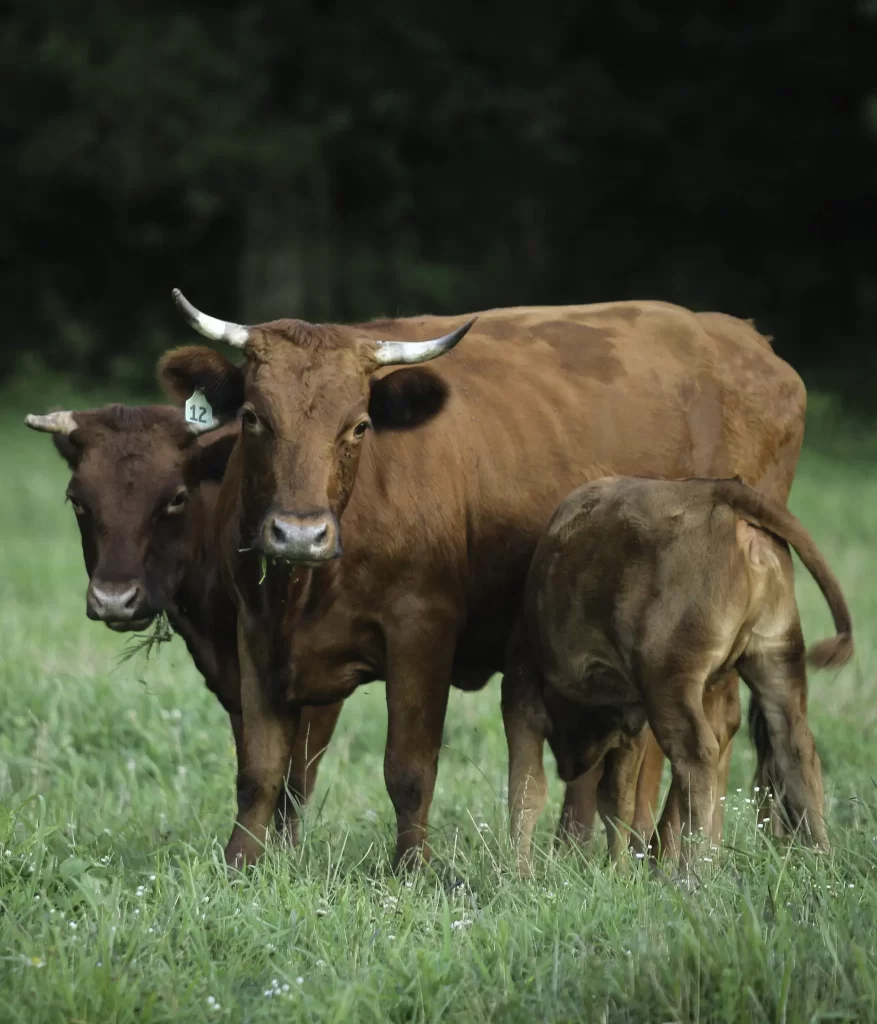
2. Miniature Hereford Cattle
- Origin: England
- Size: Typically 38-42 inches tall and weighing 600-1,000 lbs.
- Colors: Miniature Herefords have a distinctive red body with white faces, legs, and underbellies. Their appearance is similar to the traditional Hereford but in a more compact form.
- Key Characteristics: Known for their signature red and white markings, Miniature Herefords are gentle, manageable, and produce top-quality beef with excellent marbling.
- Best Uses: Primarily raised for beef, these cattle are also a favorite for youth livestock shows due to their calm demeanor and manageable size.
- Care Tips: They require proper grazing rotation to maintain healthy pastures and minimize overgrazing. Regular parasite control is essential for optimal growth and health.
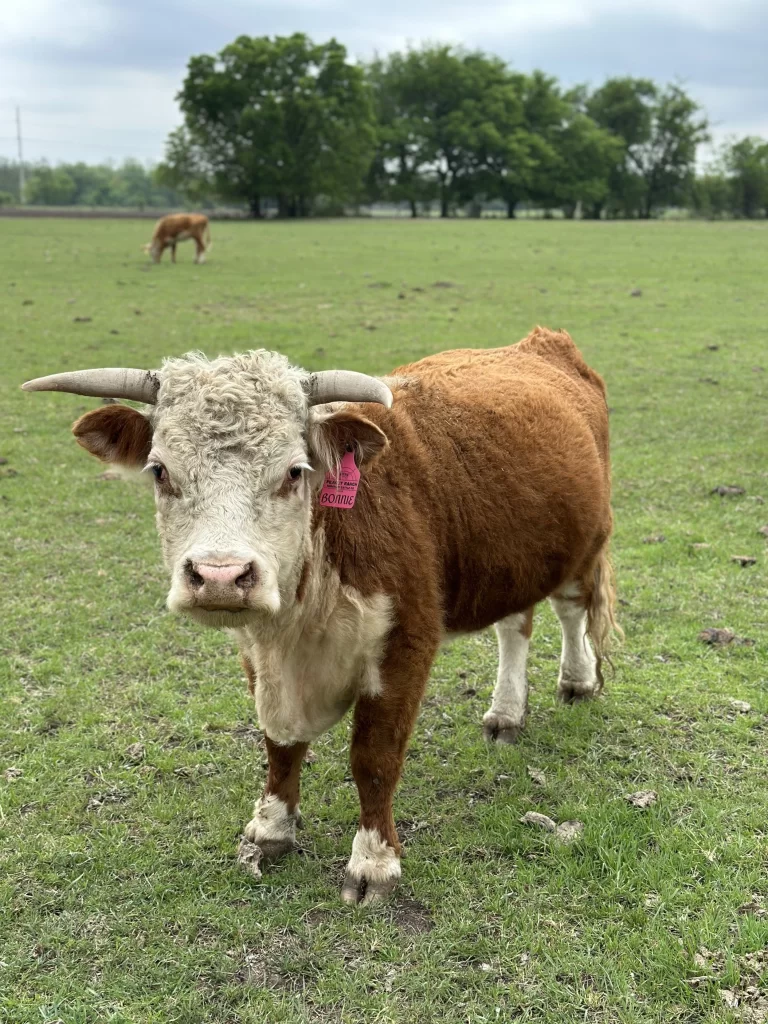
3. Lowline Angus
- Origin: This breed was developed in Australia in the 1970s.
- Size: With a height of 35-45 inches, they weigh 800-1,000 lbs.
- Colors: Lowline Angus cattle are typically solid black. The breed retains the classic black coloration of the full-sized Angus cattle, making them easy to identify.
- Key Characteristics: Lowline Angus cattle are celebrated for their ability to produce high-quality, tender beef on minimal feed. They are hardy, disease-resistant, and excellent converters of forage to meat.
- Best Uses: Perfect for beef production, particularly for small-scale operations focused on sustainable farming.
- Care Tips: Maintain a consistent diet with access to high-quality forage. They are naturally docile, but regular handling helps maintain their calm demeanor.
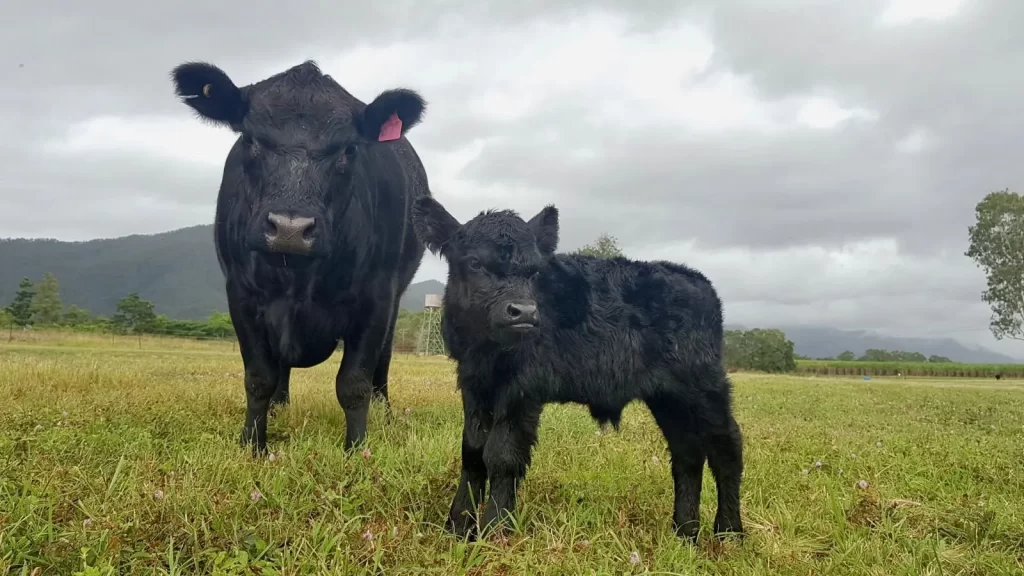
4. Miniature Jersey Cattle
- Origin: Isle of Jersey
- Size: Standing 36-42 inches tall and weighing 400-700 lbs, they are one of the lightest miniature breeds.
- Colors: Miniature Jersey cattle are usually a light to medium brown, ranging from golden to dark fawn, with some animals having white markings on their face, legs, or underbelly.
- Key Characteristics: Renowned for their exceptional milk yield, Miniature Jersey cows produce rich milk with high butterfat content, perfect for making butter, cream, and cheese. They are friendly and adapt well to small herds.
- Best Uses: Best suited for families or small farms looking for a steady source of high-quality milk.
- Care Tips: Provide ample access to calcium-rich forage to support milk production. They thrive in moderate climates and require consistent milking to maintain their output.
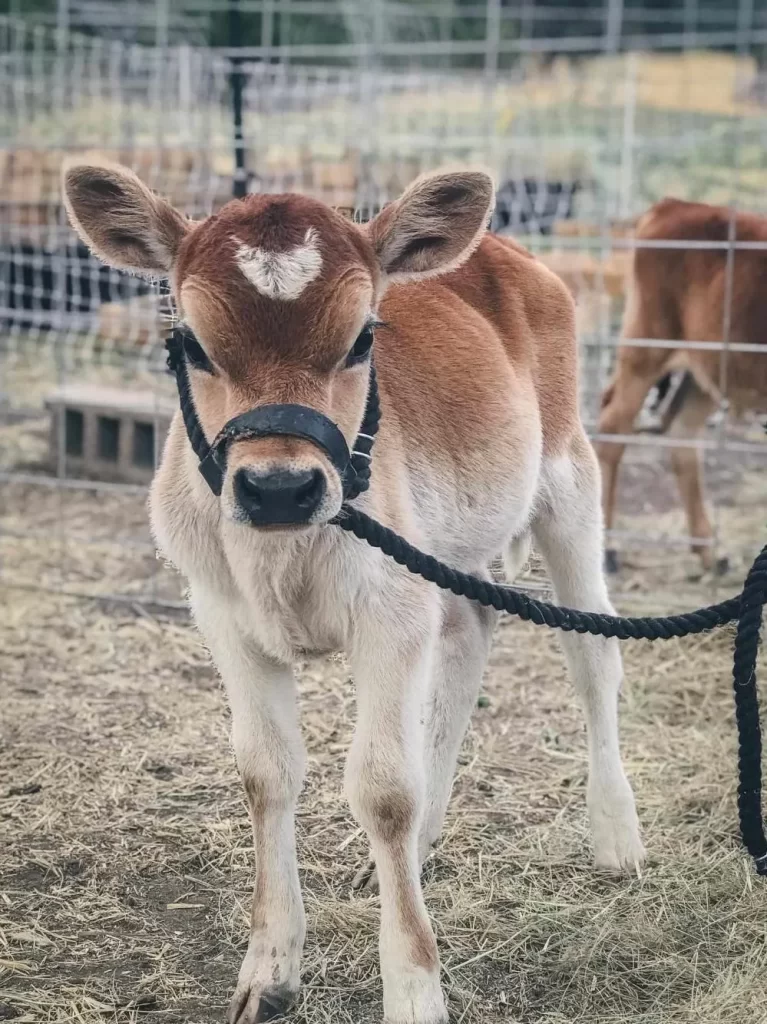
5. Miniature Belted Galloway
- Origin: Scotland
- Size: Standing 42-44 inches tall and weighing 800-1,000 lbs, they are a robust and hardy breed.
- Colors: The most distinctive feature of the Miniature Belted Galloway is their white “belt” around the midsection. Their bodies are typically black, but they can also be red or dun with a contrasting white belt.
- Key Characteristics: Often referred to as the “Oreo cattle” due to their appearance, Miniature Belted Galloways are known for their thick, insulating coats and lean, flavorful beef.
- Best Uses: Ideal for dual-purpose farming—meat production and aesthetic appeal. They are also excellent at maintaining pastures by grazing on rough forage.
- Care Tips: Ensure adequate shelter during extreme winters to protect their coats, and provide a balanced diet to maintain their body condition.
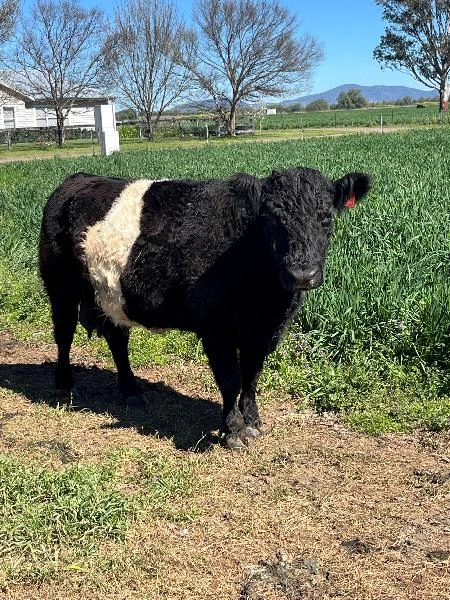
6. Panda Cattle
- Origin: United States
- Size: Small and compact, they stand 35-44 inches tall and weigh 600-800 lbs.
- Colors: As their name suggests, Panda cattle are known for their striking black-and-white markings, resembling a panda. They have a white body with black patches, often around the eyes and ears, and occasionally on their back.
- Key Characteristics: Beyond their striking appearance, Panda cattle are easy to handle and are often used as show animals or for hobby farming.
- Best Uses: Great for small-scale milk production, petting zoos, or as unique companions.
- Care Tips: Keep their environment clean and provide regular grooming to preserve their iconic look.
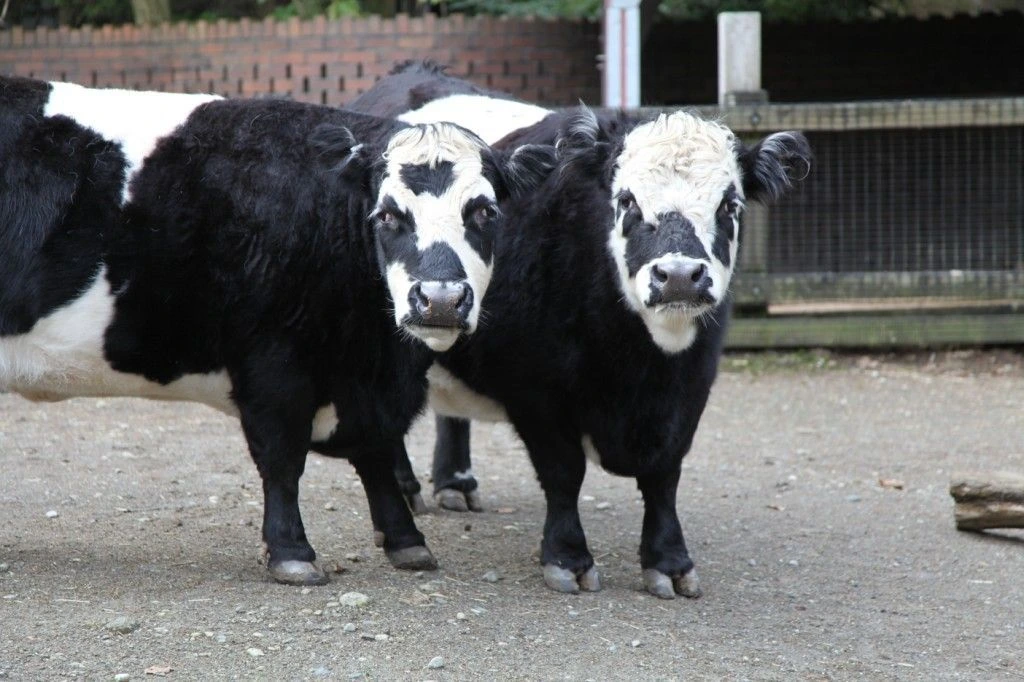
7. Miniature Zebu
- Origin: South Asia
- Size: Standing 30-40 inches tall and weighing just 400-600 lbs, they are one of the smallest breeds.
- Colors: Miniature Zebu cattle come in a range of colors, including gray, red, and black. Some individuals have white markings, but they typically maintain a solid coat color with a light-colored hump.
- Key Characteristics: Their distinct hump and slender frame make them instantly recognizable. Miniature Zebus are extremely hardy and thrive in hot climates.
- Best Uses: Ideal for warm regions, they are used for light milk production, companionship, and weed control.
- Care Tips: Provide plenty of shade, access to clean water, and protection from biting insects in tropical climates.
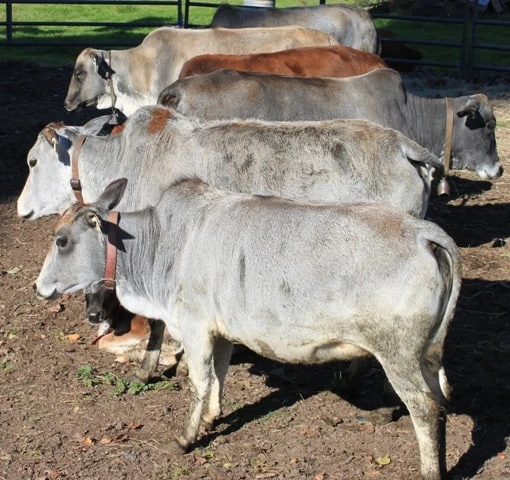
8. Miniature Highland Cattle
- Origin: Scotland
- Size: Typically 36-44 inches tall and weighing 600-900 lbs.
- Colors: Miniature Highland cattle are most commonly red, yellow, or black, though they can also be brindle (a mix of dark and light stripes). Their long, thick coats can also vary in shade within the breed.
- Key Characteristics: Miniature Highland cattle are incredibly hardy and can withstand harsh winters. Their friendly nature makes them a favorite among hobby farmers.
- Best Uses: Excellent for meat production, grazing, and even as a tourist attraction due to their striking appearance.
- Care Tips: Regular brushing is essential to prevent matting of their long hair. They also require adequate shelter during extreme conditions.
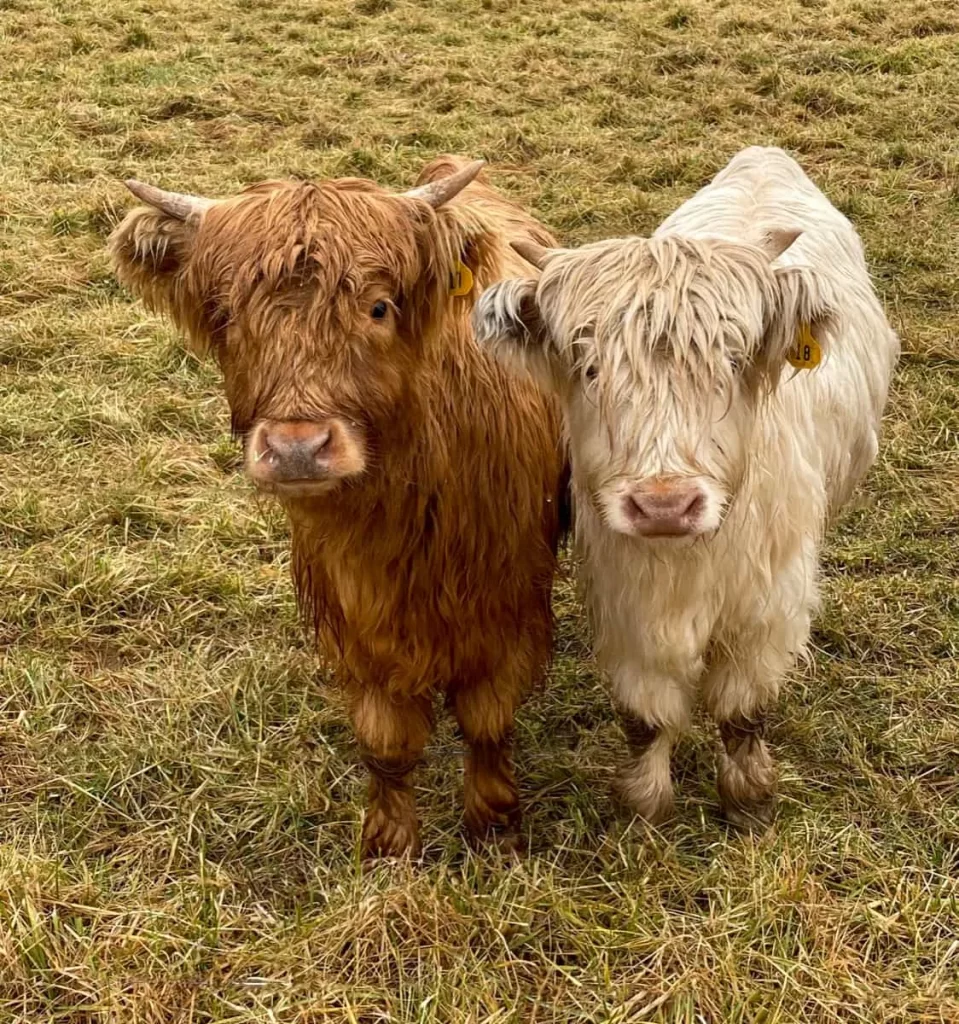
9. Miniature Texas Longhorn
- Origin: USA
- Size: Measuring 38-45 inches tall and weighing 800-1,000 lbs.
- Colors: Miniature Texas Longhorns can be a variety of colors, including red, black, white, and combinations of these. Some have distinctive color patterns, such as speckling or even a brindle pattern, but all typically have the breed’s signature long, curved horns.
- Key Characteristics: Longhorns are hardy, disease-resistant, and known for their distinctive, long horns.
- Best Uses: Primarily raised for beef, they are also used as ornamental livestock due to their striking appearance.
- Care Tips: Ensure fencing is robust, as their active nature and horns can test weaker enclosures.
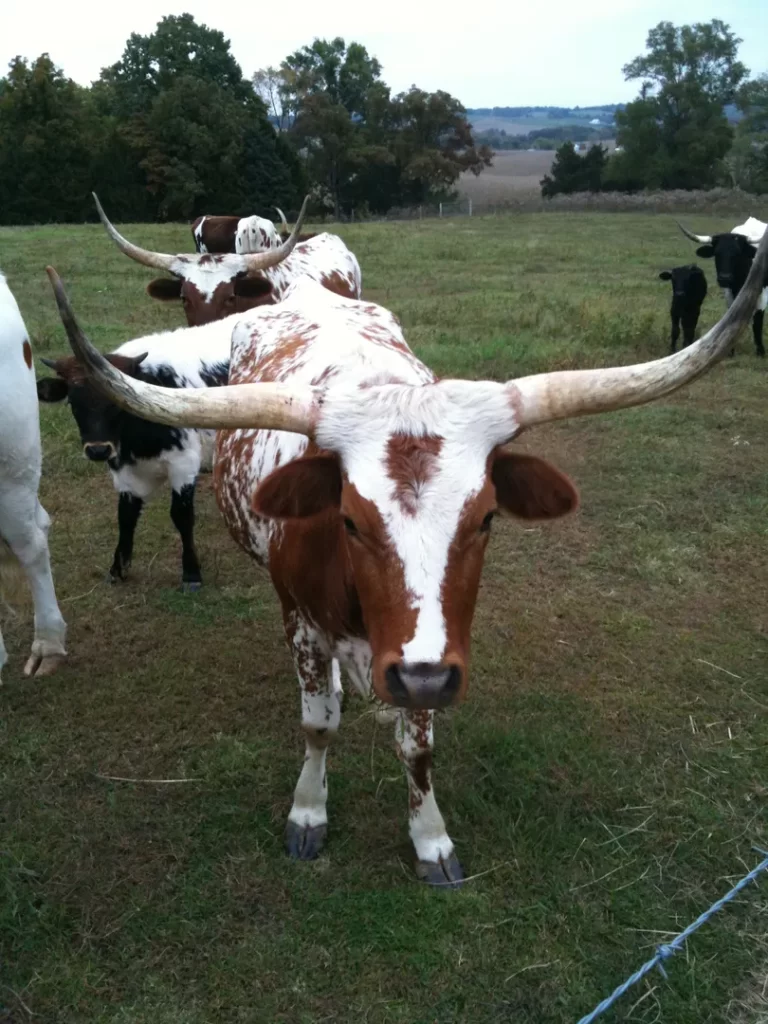
10. Kerry Cattle
- Origin: Ireland
- Size: Standing 36-42 inches tall and weighing 800-1,000 lbs.
- Colors: Kerry cattle are typically black, although they can also be red. This breed’s solid black or red coat is often shiny, giving them a sleek, elegant appearance.
- Key Characteristics: Known for their exceptional dairy qualities, Kerry cows produce milk with a high butterfat percentage.
- Best Uses: Perfect for small-scale dairy farms or conservation enthusiasts.
- Care Tips: Support conservation efforts by sourcing from responsible breeders and providing nutrient-rich forage to maintain milk quality.
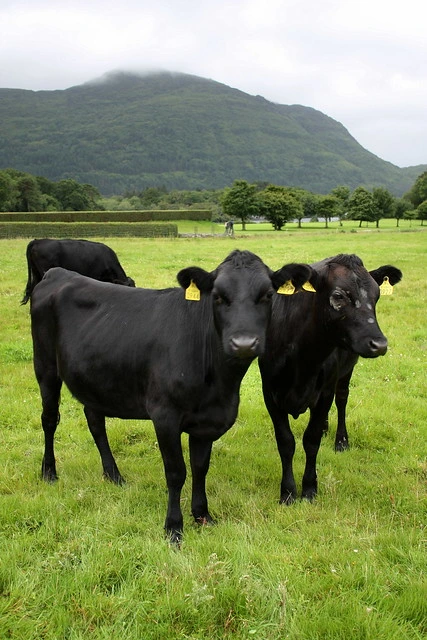
How to Choose the Best Miniature Cattle Breed for Your Small Farm
When selecting a breed, consider these factors:
- Farm Size: Some breeds require more space for grazing.
- Purpose: Decide whether you need milk, meat, or a companion animal.
- Climate Suitability: Choose breeds that thrive in your local weather conditions.
- Temperament: Look for docile breeds if you’re new to cattle farming.
- Maintenance Needs: Evaluate feeding, grooming, and healthcare requirements.
Conclusion
Miniature cattle breeds offer a wonderful opportunity for small farm owners to reap the benefits of cattle farming without the burden of managing large, space-hungry animals. From the sweet milk of the Miniature Jersey to the hearty beef of the Lowline Angus, these breeds offer variety and versatility that can cater to different farming goals.
As you consider which miniature breed is right for your farm, think about your specific needs—whether it’s for dairy, meat, or even a charming pet—and how much time and space you can dedicate to their care. No matter the breed, miniature cattle are a rewarding choice for farmers who want to keep their operations manageable while still enjoying the joys of raising livestock.
Now that you’re equipped with information on the best miniature cattle breeds, it’s time to make your decision and start your small farm journey! Let us know which breed you’re most excited about in the comments below, and share your farming experiences with us. Happy farming!
